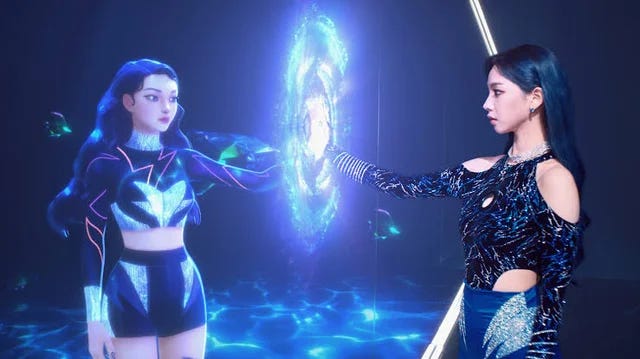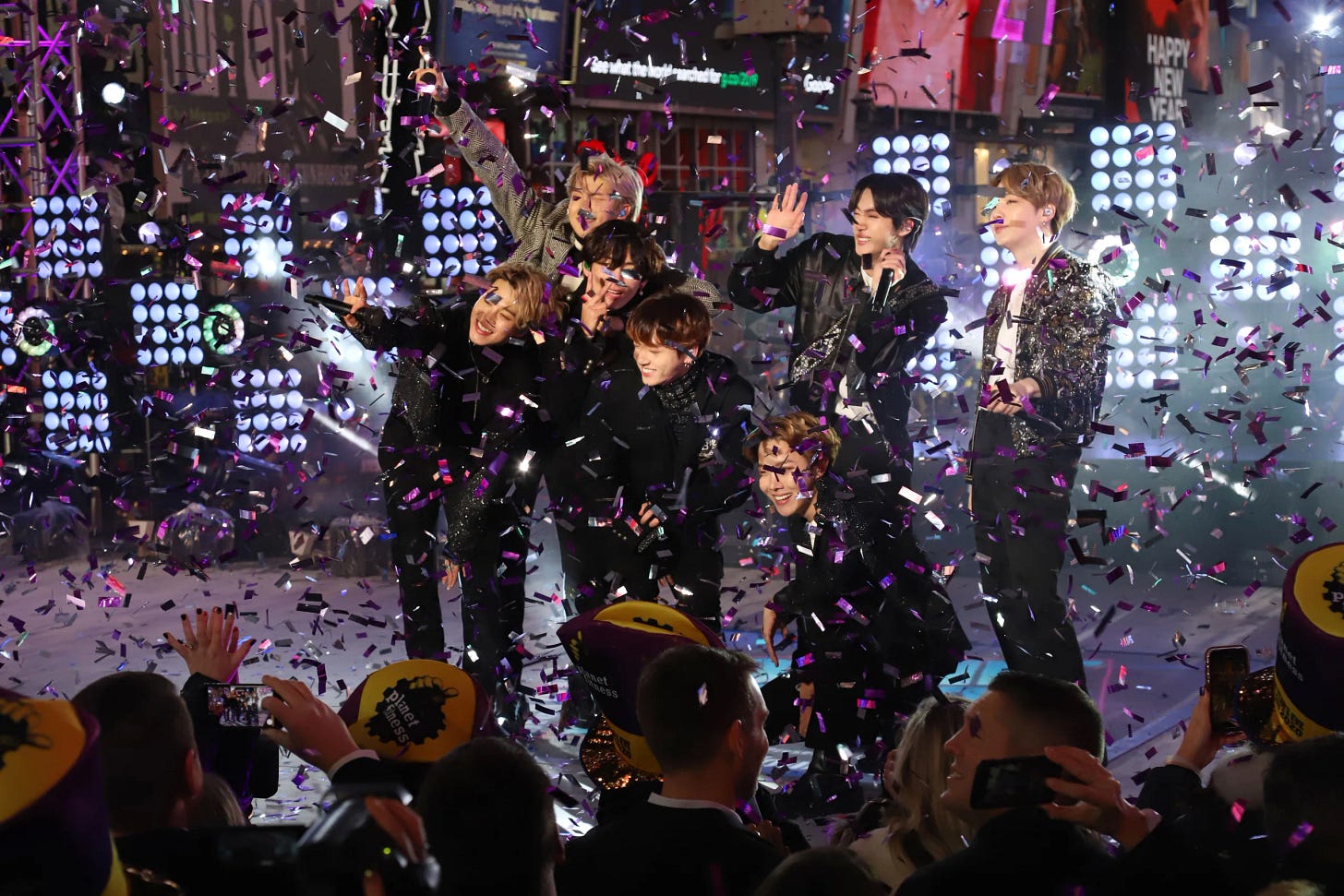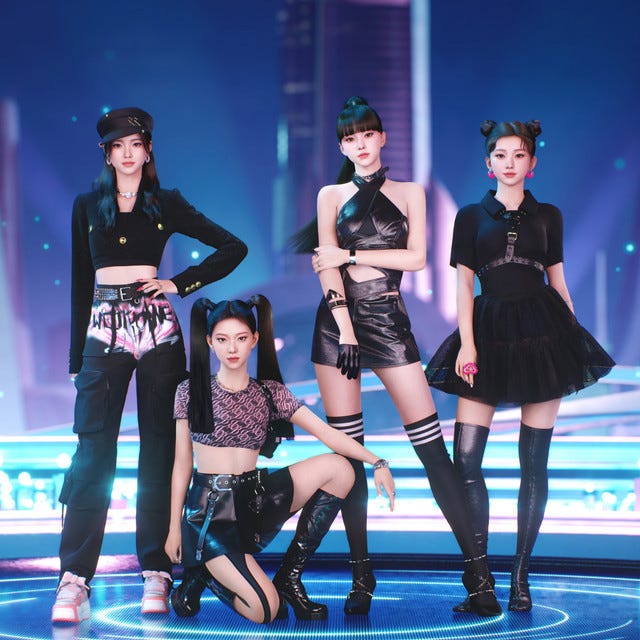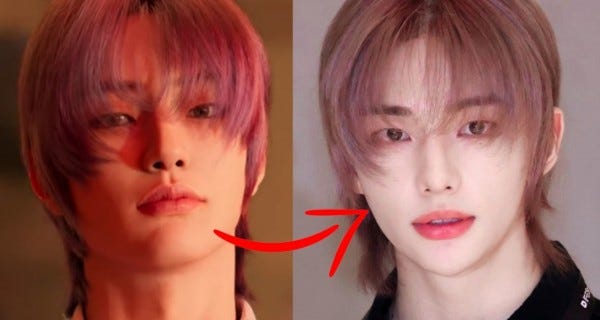Op-Ed: Virtual Idols: The Unoriginal and Unethical Future of K-Pop
WP3 genre: Argumentative essay
WP4 Genre: Op-ed
Audience: The audience is generally educated with a loose understanding of K-Pop.
Motivation: Virtual idols in the K-pop scene are stealing the spotlight from hardworking artists. It also undermines the very craft of performance and needs to be stopped.

As many other K-Pop fans will agree, Metaverse Entertainment’s popular virtual idol girl group MAVE has been a horrific spectacle to watch.
Virtual idols aren’t necessarily a new phenomenon in the entertainment industry—we’ve seen them in holograms and vocaloids in the past—but this phenomenon observed in K-Pop is totally different. These virtual idols do more than sway side to side; they dance in perfect sync, sing impossibly high, and, more importantly, emulate personalities. The virtual idols that are debuting today have names, hairstyles, nail polish, and personal Instagram accounts. And while they aren’t entirely perfect with their scripted dialogue and unblinking eyes, virtual girl group MAVE has generated enough buzz to debut on popular music shows and garner more than 22 million views on their PANDORA music video.
While some are excited about the prospect of virtual humans in the K-Pop scene, the rising popularity of these virtual groups spells trouble for human performers. No matter how long they train, human performers cannot sing higher or dance sharper than a digital model that can be tweaked and improved. It’s the ultimate cheat code; the virtual idol will consistently outperform the human one. Placing these virtual groups on the same stage as popular K-Pop groups quietly raises the already-high standard to extremes and ultimately steals the spotlight away from deserving human artists.
By normalizing the debut of virtual idols, we destroy the careers of human artists. The culture will shift towards entertainment companies opting to debut a much prettier, cheaper virtual idol rather than spend money and time training a real, human one. Huge companies like SM Entertainment and YG Entertainment are already following the virtual idol trend, with both companies planning to debut their own virtual artists later this year. If this trend continues, the K-Pop scene and culture will shift drastically, making more space for virtual idols, and human idols will eventually get pushed out altogether.
That’s what it really boils down to: replacement. The real problem is that this replacement could only have been initiated through acts of theft.
The most prominent virtual groups, like SuperKind and MAVE, have been trained and produced by analyzing the current trends in K-Pop, from hairstyles to facial features. Then they took all these money-making factors, stuck them into the idol-making formula, and voila! A perfect, flawless virtual idol is born and ready to debut.
And while no one can claim ownership of a hairstyle or an eye shape, the inherent problem lies in the fact that these features were originally created and popularized by human K-Pop performers, who worked hard to develop their unique styles. By incorporating these features into virtual faces, virtual idols effectively steal from human performers, robbing them of their creativity and unique talent.
Take boy group member Seung from SuperKind, for example. He is one of the band’s virtual idols, alongside Saejin. Seung quickly rose in popularity by directly engaging with fans and filming trendy TikTok dances. However, many fans noticed that as the technology behind his character improved, his face slowly grew to resemble popular boy group StrayKids’ member Hyunjin. Another similar case of theft is shown in MAVE’s Pandora music video, where we can see elements of Aespa’s visual concept. For context, Aespa is a girl group known for its futuristic and cyber-sigil visuals, characterized by metallic, neon, and maximalist elements, all of which can be seen in MAVE’s music video.
While this seems like a simple issue of plagiarism, virtual idols are taking more than just music video content or a hairstyle; they’re taking the essence and defining the concept of that group. For example, StrayKid’s Hyunjin has been well-known for his sharp cat eyes, cold personality, and dancing skills. He and his agency have worked tirelessly to carefully curate this image. So when Seung (SuperKind) takes on Hyunjin’s face, he’s stealing not only his physical appearance but also his entire image and personality that come with it.
“That’s what it really boils down to: replacement. The real problem is that this replacement could only have been initiated through acts of theft.”
It’s an unoriginal, unethical, and lazy production. Instead of fostering and training natural talent, agencies can now create digital replicas of existing idols based on their appearance and skills. It’s a cheap way to generate profit without investing in actual talent and innovation. Furthermore, by relying on pre-existing images and personas, virtual idols do not have to undergo the same rigorous training and development as real idols, making it a lazy and ultimately unfulfilling approach to creating entertainment content.
The creation of virtual idols brings to light another intricate problem: the absence of safeguards for the people who are the real driving force behind the avatars. Despite how MAVE is perceived, MAVE isn’t an AI-generated girl group; each girl was made with the help of human models. Their choreography was made with the help of motion-capture film, where actual dancers and performers were used to create the movements that the virtual idols would later replicate. Their voices also belong to other singers, which are recorded into software that can manipulate and modify them to create the “unique” sound of the virtual idols.
MAVE’s reality is carefully crafted, and each group member is the product of extensive planning and calculation. Multiple girls were used as models to create virtual idols, with their features and talents carefully tweaked and blended to form the final product. As a result, MAVE successfully represents the ideal K-Pop girl group, perfectly curated to appeal to its target audience.
To some, MAVE is the perfect marriage between technology and performance. After all, AI and technology are already so omnipresent in the industry, so it would make sense that performers would learn to hold hands with their digital counterparts. However, there’s no reason we should equalize these virtual performances with those held by human artists. In fact, we should not even consider virtual performances as art. If we do, we undermine the craft of visual performance that K-Pop is defined by and dismiss the hard work of human talent.

Because when it comes down to it, the core of visual performance lies in human connection. And in K-Pop, that feeling of human connection is especially important. While K-Pop is known for its glitzy and glamorous performances, at its core, it’s about the human connection that the idols forge with their fans. The artist’s hard work, dedication, and passion fuel fans’ intense devotion. The emotional connection that fans feel through their idols’ music and performances keeps fans returning for more.
Without that connection, performance is simply a soulless imitation of art. Sterile, almost. While technology can enhance and complement live performances, it simply cannot replace the emotional depth and human connection at the core of what makes K-Pop performances so special.
Virtual idols seem cool; they represent a fascinating glimpse into the future of entertainment. But they cannot replace the idols we have now. It’s time to acknowledge the hard work of K-pop idols and celebrate the artistry of human talent.
Reflection
The debate about AI and technology is polarizing. Most view AI as a tool used for the general betterment of work, while others are frightened by AI’s potential, feeling like their jobs are being threatened.
While my topic is very niche (virtual K-Pop idols), I was still able to partake in the overall conversation and discourse surrounding the “AI apocalypse.” I took a prevalent stance in my Op-Ed, as I stood against the “replacing” of human talent.
My Op-ed about the emergence of virtual idols fits within the ongoing discourse about the role of technology in the music industry. My main points touch upon the concepts of authenticity and visual creativity, specifically how technology shapes idol culture. I found that AI technology is already omnipresent in the music industry, and by analyzing how it was incorporated, I could see how creativity was defined and valued.
For example, the way virtual idols were so cheaply made led me to conclude that the industry tends to prioritize profit over artistic integrity. As a result, there was a clear stray away from deliberate musical artistry in the K-Pop culture, instead becoming more manufactured and profit-driven. Because of this, I wrote that virtual idols represent the “unoriginal future” of K-Pop, and their emergence is the start of an era where musicality no longer matters as much.
In WP3, I failed to address the “big picture,” and the piece I wrote didn’t fit into the discourse I was trying to partake in. I knew that virtual idols existed, and I tried to shine a light on both the pros and cons of their emergence in an attempt to explore the concept of virtual idol groups. However, by doing so, all of my points were superficial and shallow. It did not support either argument and lacked depth. In retrospect, I realized that I should have written about the more significant issue of what virtual idols represent for the future of the music industry instead of offering interesting tidbits about what they do and how they operate. However, this experience taught me the value of critically approaching my research and analysis. With more research, I could formulate a strong opinion on the topic at hand, and because of this, I produced a more nuanced and well-supported argument in my Op-ed.
My Op-ed (WP4) adds to the growing conversation on the intersection of technology and art. It challenges the idea that AI and technology can completely replace human creativity and connection in the music industry and highlights the tension between technology and authenticity.





